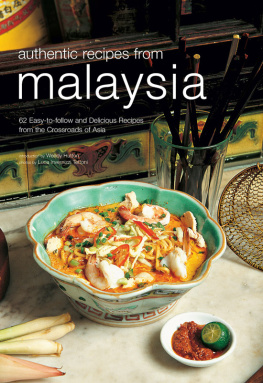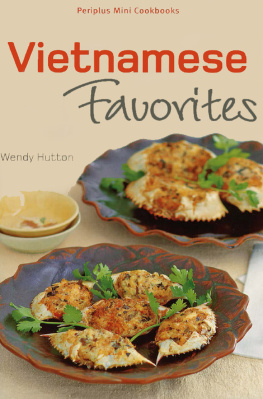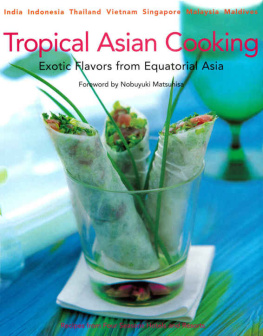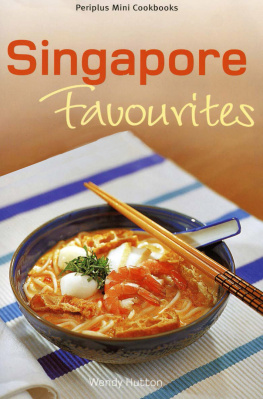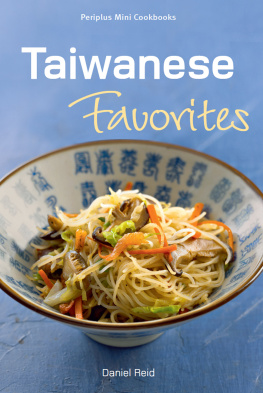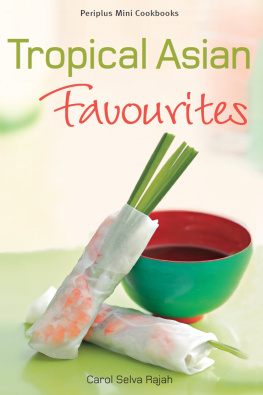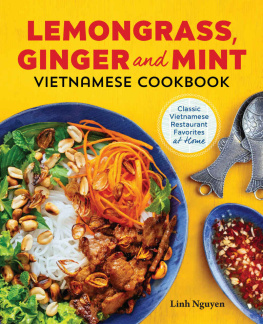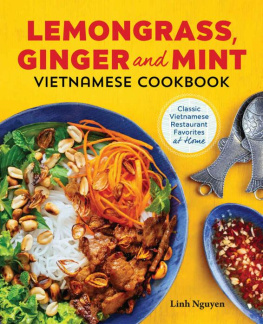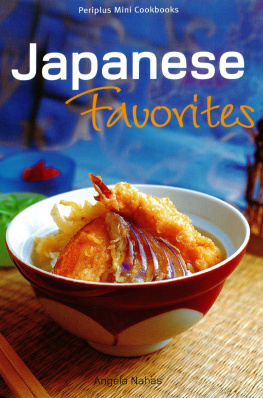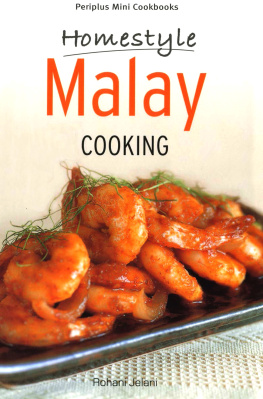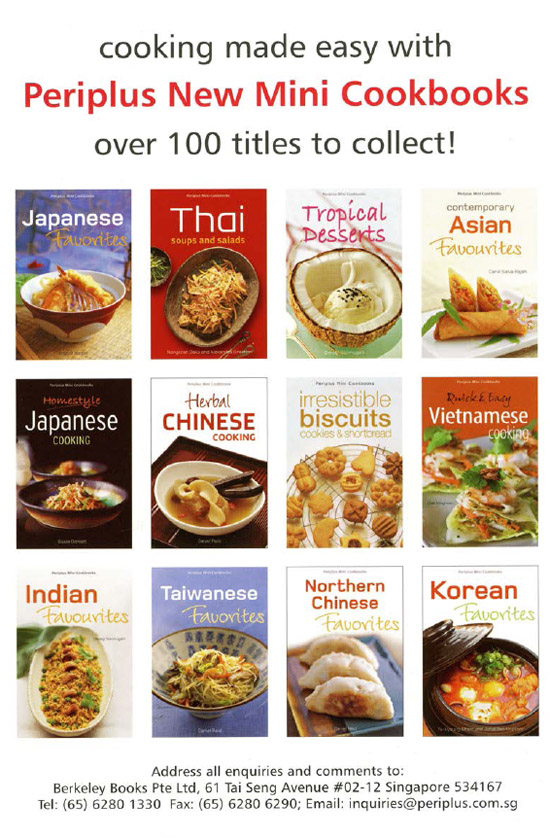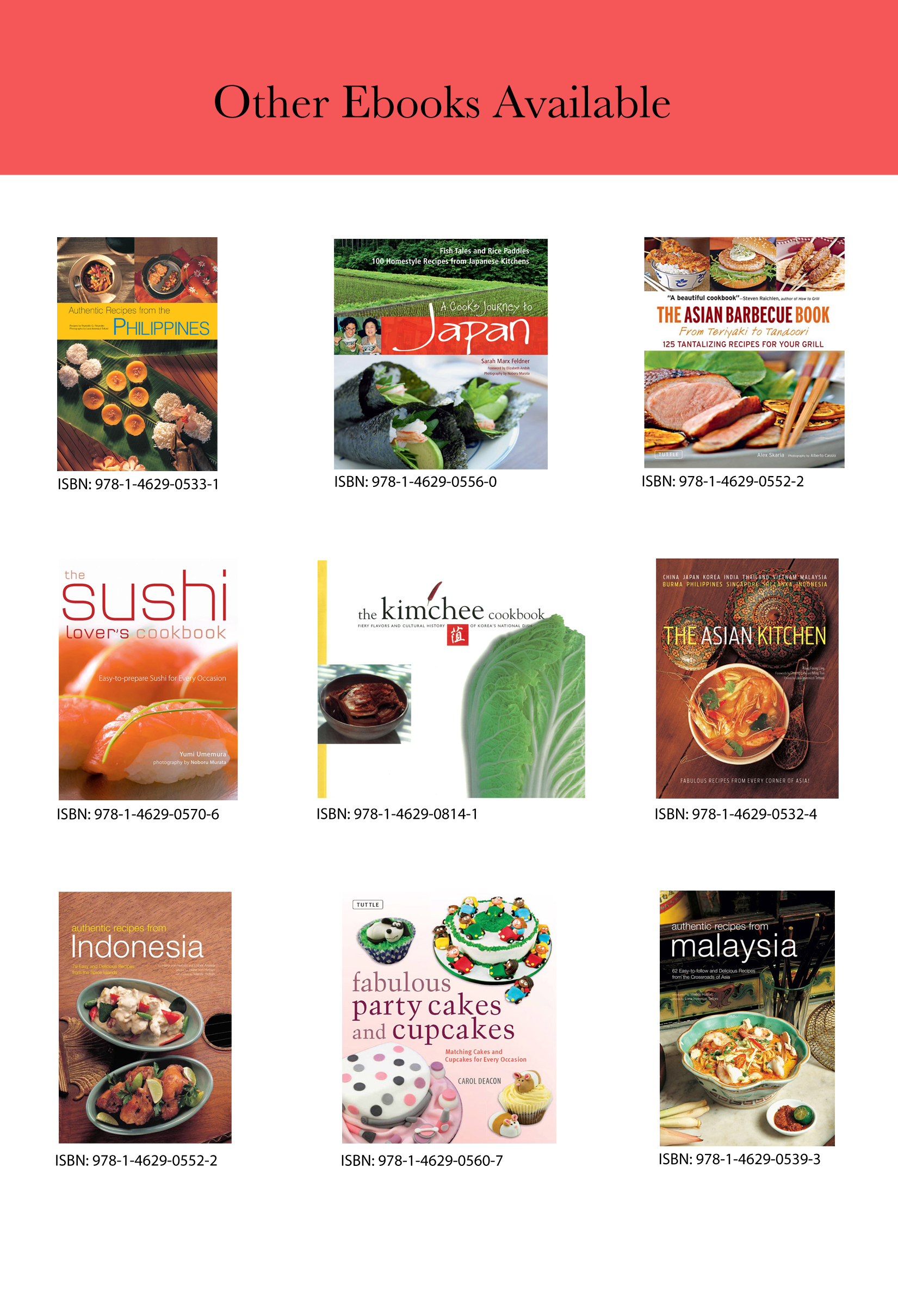Published by Periplus Editions (HK) Ltd.
Copyright 2005 Periplus Editions (HK) Ltd.
All rights reserved. No part of this publication may be reproduced, stored in a retrieval system or transmitted in any form or by any means, electronic, mechanical, photocopying, recording or otherwise without the prior written permission of the publisher.
Featuring over 30 easy-to-prepare recipes like Beef Soup with Lemongrass, Honey Ginger Prawns and Five Spice Fried Chicken, this book is the perfect guide to creating Vietnamese cuisine in the comfort of your home.
Essential Vietnamese Ingredients

Chilies have become an essential culinary item in almost every Asian country. Many different varieties are used. The Asian finger-length red chili is moderately hot. Dried red chilies of this variety are ground to make chili flakes or ground red pepper. Tiny bird's-eye chilies are extremely hot. They are also available dried. The seeds are usually removed when slicing or mincing the chilies.
Coconut cream and coconut milk are mainly used in Vietnamese desserts. While freshly pressed coconut milk has more flavor, coconut cream and milk are now widely sold in cans and packets that are quick, convenient and tasty. You can dilute canned or packaged coconut cream to obtain thick or thin coconut milk. Fresh coconut cream is made by grating the flesh of 1 coconut (this will yield about 4 cups of grated coconut flesh), adding cup water, kneading a few times, then straining it with your fist, or with a muslin cloth or cheesecloth. This should yield about cup of coconut cream. Thick coconut milk is obtained by the same method, but the water is doubled to 1 cup and 1 coconut will yield about 1 cup of thick coconut milk. Thin coconut milk is obtained by adding 2 cups of water to the already pressed coconut flesh a second time and straining again, and this should yield 2 cups of thin coconut milk. Most of the recipes in this book call for thick coconut milk. Consistencies vary from brand to brand, so use your judgement and dilute with water or reduce the quantity as needed to get more or less coconut flavor.

Basil is often used as a seasoning and garnish in Vietnamese cooking. Several types of basil are used; the most common is Asian Basil (known as horapa in Thailand), which is similar to European sweet basil. It is used liberally as a seasoning and sprigs are often added to platters of fresh, raw vegetables. Similar, yet paler in color, and with a distinctive lemony fragrance, lemon basil is used in soups and salads. Holy basil has distinctive purple-reddish leaves and a mint-like zesty flavor and is used for stir-fries. Basil doesn't store well, so buy it just before you intend to use it. European sweet basil may be used as a substitute for all varieties.

Coriander leaves or cilantro are the leaves of the coriander plant and are often referred to as Chinese parsley. In Vietnam, coriander leaves are used almost exclusively as a garnish. Fresh coriander leaves should keep for 5 to 6 days in the refrigerator if you wash and dry the leaves and store them in a plastic bag.
Curry powder is a spice blend made by combining ground spices that generally include cumin, coriander seeds, chilies, turmeric, ginger, cinnamon and cloves. Different spice combinations vary in color and flavor.
Fish sauce is the ubiquitous condiment used in almost every Vietnamese dish, just as salt or soy sauce are used in other cuisines. Made from salted, fermented fish or shrimp, it has a very pungent, salty flavor in its pure form. Fish sauce is often combined with other ingredients such as sugar, garlic and lime juice to make the various dipping sauces known as nuoc mam cham. Use sparingly and look for a quality brand for a better flavor. Refrigerate after opening.
Five spice powder is a blend of fragrant cinnamon, star anise, cloves, fennel seeds and Sichuan peppercorns. This reddish-brown powder is popular as a seasoning in Chinese cuisine and some Thai and Vietnamese dishes. Five spice powder is generally used in small amounts as it is quite strong. To keep fresh as long as possible, store in the refrigerator or freezer.
Hoisin sauce is a sweet, reddish-brown sauce made from soybeans, garlic, peppers and various spices. Commonly used as a table condiment and flavoring for meat, poultry and shellfish dishes, this Chinese sauce is sold bottled or canned. Bottled hoisin will keep indefinitely when refrigerated.

Lemongrass is an intensely fragrant stalk used to impart a lemony flavor. The thick lower part of the stem nearest the roots is the edible portion. Discard the thin upper end and the dry outer leaves until you reach the inner core, which should be moist and tender. When using the stalk, bruise it before cooking and remove it from the dish after cooking and before serving. Lemongrass is available fresh in most supermarkets.
Mint leaves, one of the most common Vietnamese herbs, are indispensable in Vietnamese salads. Mint grown in Southeast Asia has a very intense flavor, the closest equivalent elsewhere being spearmint although regular mint leaves may also be used.

Noodles made from rice, both fresh and dried, are widely used in Vietnamese cooking. White rice stick noodles (bank pho), which are similar to kway teow (sometimes called hofun or rice noodles), are used in Vietnam's classic breakfast dish, pho. If unavailable, the dried one can be used. Bun noodles (fresh or dried) are thick, round rice noodles that double their size and turn very white when cooked. Fine rice vermicelli (banh hoi) are similar to bun noodles, but thinner. Glass or cellophane noodles (mien in the north and bun tao in the south) are dried, translucent noodles made from mung bean starch, which are reconstituted by pouring hot water over them.



